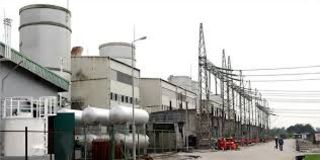Why EA is now continent’s top investment destination

What you need to know:
- A new Ernst and Young Report has shown that East Africa is now the leading destination of Foreign Direct Investment (FDI) in Africa, thanks to massive investments in infrastructure, technology, real estate, hospitality and construction across Tanzania, Ethiopia, Kenya, Uganda and Rwanda
- The report also highlights that Zimbabwe is one of the countries that are experienced a major uptick in FDI during the 2017 year.
Dar es Salaam. Massive investments in infrastructure, real estate, technology, hospitality and construction in Tanzania, Ethiopia, Kenya, Uganda and Rwanda have made East Africa the most preferred investment destination on the continent, a new study shows.
In its study findings titled Africa Attractiveness Report 2018, Ernst & Young (EY) says East Africa last year overtook its western, southern and northern Africa peers in attracting foreign direct investments (FDI) for the first time in history.
East Africa bagged 197 FDI projects in 2017, EY says, far above the 185, 172 and 162 projects registered in the north, west and southern Africa, respectively.
The 197 new projects in East Africa were an 82 per cent improvement over the 2016 investments.
“The project numbers for 2017 made the region Africa’s major FDI hub,” the report reads in part, adding that Kenya, Ethiopia and Tanzania received the highest number of FDI projects – 67, 62 and 35 respectively.
The 35 projects registered in Tanzania were a 59 per cent improvement over the 22 registered in 2016.
“Nine of the projects were in real estate, hospitality and construction (RHC),” the report states, attributing the improvement to government investments in related infrastructure, and private sector investments in the region’s hydrocarbons sector.
Tanzania is currently building a 300-kilometre stretch of the standard gauge railway (SGR) between Dar es Salaam and Morogoro. This is part of the government’s wider goal of eventually linking Dar es Salaam to Rwanda and Burundi with high-speed electric-powered train services at a total cost of $1.2 billion.
The SGR project is being implemented by Yapi Merkez Insaat Ve Sanayi (Turkey) and Mota-Engil, Engenharie and Construcao Africa-SA (Portugal).
Uganda stands out on the FDI map due to its major oil discoveries, attracting 14 FDI projects in 2017, up from nine in 2016.
Also notable is Rwanda, which, according to EY, is receiving a larger share of FDIs than the size of its economy, thanks to its long-term economic reform agenda.
Overall, the EY report, Turning Tides, shows that Africa attracted 718 FDI projects: six per cent higher than the previous year.
For a country to attract a strong share of FDIs and solidify its position on the global investment map requires considerable efforts by stakeholders.
The higher project numbers in 2017 were largely driven by interest in next generation sectors – manufacturing, infrastructure and power generation.
But, despite the rise in FDIs, project numbers remain below the 10-year average of 784 per annum.
The EY report also highlights countries with the strongest FDI gains – with Ethiopia, Kenya and Zimbabwe experiencing a major uptick in FDIs in 2017.
In contrast, South Africa, Egypt, Mozambique and Cote d’Ivoire experienced declines in FDI projects that year.
Commenting on the matter, EY Africa CEO Ajen Sita said, “2017 was in many respects a key year for the (African) continent. We saw multiple changes in leadership in a number of countries, including South Africa, Zimbabwe and Angola.
“In addition, Kenya’s last election (2017) was drawn out – which created uncertainty at the time. Changes in leadership have in turn led to renewed urgency to implement fresh policies as new administrations move to address slow economic growth.”




